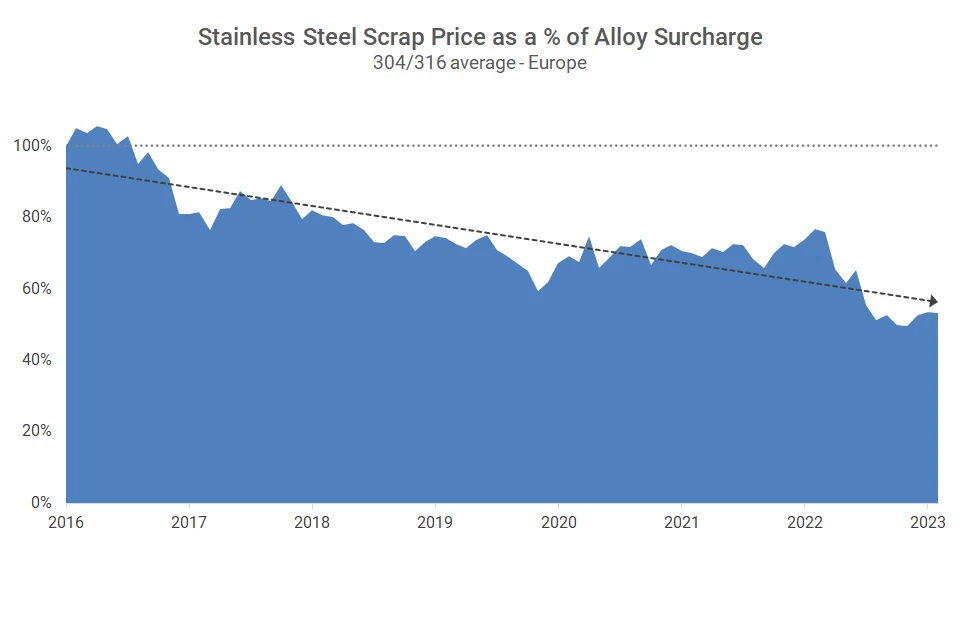Explainer: Pricing mechanisms in the European stainless steel flat products market
The “base plus alloy surcharge” calculation was the traditional pricing mechanism used by the European mills to reach agreements on contractual and spot sales of stainless steel. The base element of the price was intended to cover a proportion of the production costs, as well as fluctuating in response to the supply/demand balance. The alloy surcharge is calculated from the average cost of the constituent alloying elements, such as chromium and nickel, and was designed to give buyers and sellers protection against variations in raw material costs. The surcharge prevailing at the time of delivery was, usually, applied.
However, on several occasions this method of pricing has been replaced by an effective pricing system, whereby the agreed figure, for new production, is all-inclusive and fixed at the point of order, regardless of the delivery date.
The effective option is currently the preferred method, for buyers in the distribution sector, when negotiating prices with the stainless steel producers. The effective price level is determined by supply and demand and competition from import offers, as well as by mill input costs.
Why do alloy surcharges no longer reflect the mills’ input costs?
The surcharges are largely based on the costs of “pure” metals and alloys, but the proportion of stainless steel scrap used in electric arc furnace steelmaking has increased substantially, over time. In its latest annual report, Outokumpu stated that the recycled steel content of its stainless steel – including pre- and post-consumer scrap – was 89.8% in 2022. Consequently, the alloy surcharge is no longer a true reflection of a producer’s input costs.
Moreover, in recent years, the European stainless steelmakers have frequently amended their surcharge calculations. This has rendered them less transparent to customers and other market observers.
Many stainless buyers have questioned why the steel producers are able to offer effective prices which appear to be lossmaking, when deducting the relevant month’s alloy surcharge. If the true input costs were deducted from the effective prices, taking into account the large proportion of stainless steel scrap used in the manufacturing process, the “nominal base prices” would be much higher than they are currently. The gap between the published alloy surcharges and stainless steel scrap costs has increased significantly since the LME nickel price spike in March 2022.
What is a nominal base price and why is it currently so low?
It is possible to calculate a nominal base price for stainless steel, by subtracting the alloy extra from the fixed price. This has resulted in exceptionally low or, in some cases, negative nominal base prices, as the monthly alloy surcharges have increased. However, to clarify, these figures are purely theoretical, and do not represent actual “base plus alloy surcharge” price negotiations.
Which pricing mechanism will be used in the short term?
It is unlikely that the distribution sector will revert to purchasing using a “base plus” pricing system, in the near future. It is equally improbable that the mills will stop publishing their alloy surcharges, as a proportion of their end-user contracts remain on the traditional pricing mechanism, especially those related to the automotive and white goods industries. Consequently, this two-tiered approach to pricing is likely to persist for the foreseeable future.
What is the base of reference for MEPS prices?
Our published assessments relate to prices paid by buyers – mainly distributors, stockists and service centres – for regular and spot business with the local steel mills. They are for newly produced material, negotiated during the current month, for forward delivery.
17th March 2023







